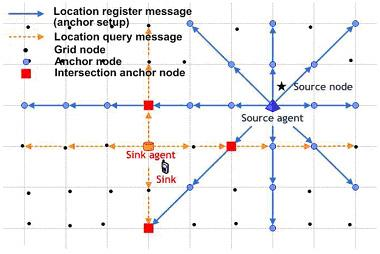Sink-oriented Dynamic Location Service Protocol for Mobile Sinks with an Energy Efficient Grid-Based Approach
Abstract
Share and Cite
Jeon, H.; Park, K.; Hwang, D.-J.; Choo, H. Sink-oriented Dynamic Location Service Protocol for Mobile Sinks with an Energy Efficient Grid-Based Approach. Sensors 2009, 9, 1433-1453. https://doi.org/10.3390/s90301433
Jeon H, Park K, Hwang D-J, Choo H. Sink-oriented Dynamic Location Service Protocol for Mobile Sinks with an Energy Efficient Grid-Based Approach. Sensors. 2009; 9(3):1433-1453. https://doi.org/10.3390/s90301433
Chicago/Turabian StyleJeon, Hyeonjae, Kwangjin Park, Dae-Joon Hwang, and Hyunseung Choo. 2009. "Sink-oriented Dynamic Location Service Protocol for Mobile Sinks with an Energy Efficient Grid-Based Approach" Sensors 9, no. 3: 1433-1453. https://doi.org/10.3390/s90301433
APA StyleJeon, H., Park, K., Hwang, D.-J., & Choo, H. (2009). Sink-oriented Dynamic Location Service Protocol for Mobile Sinks with an Energy Efficient Grid-Based Approach. Sensors, 9(3), 1433-1453. https://doi.org/10.3390/s90301433




